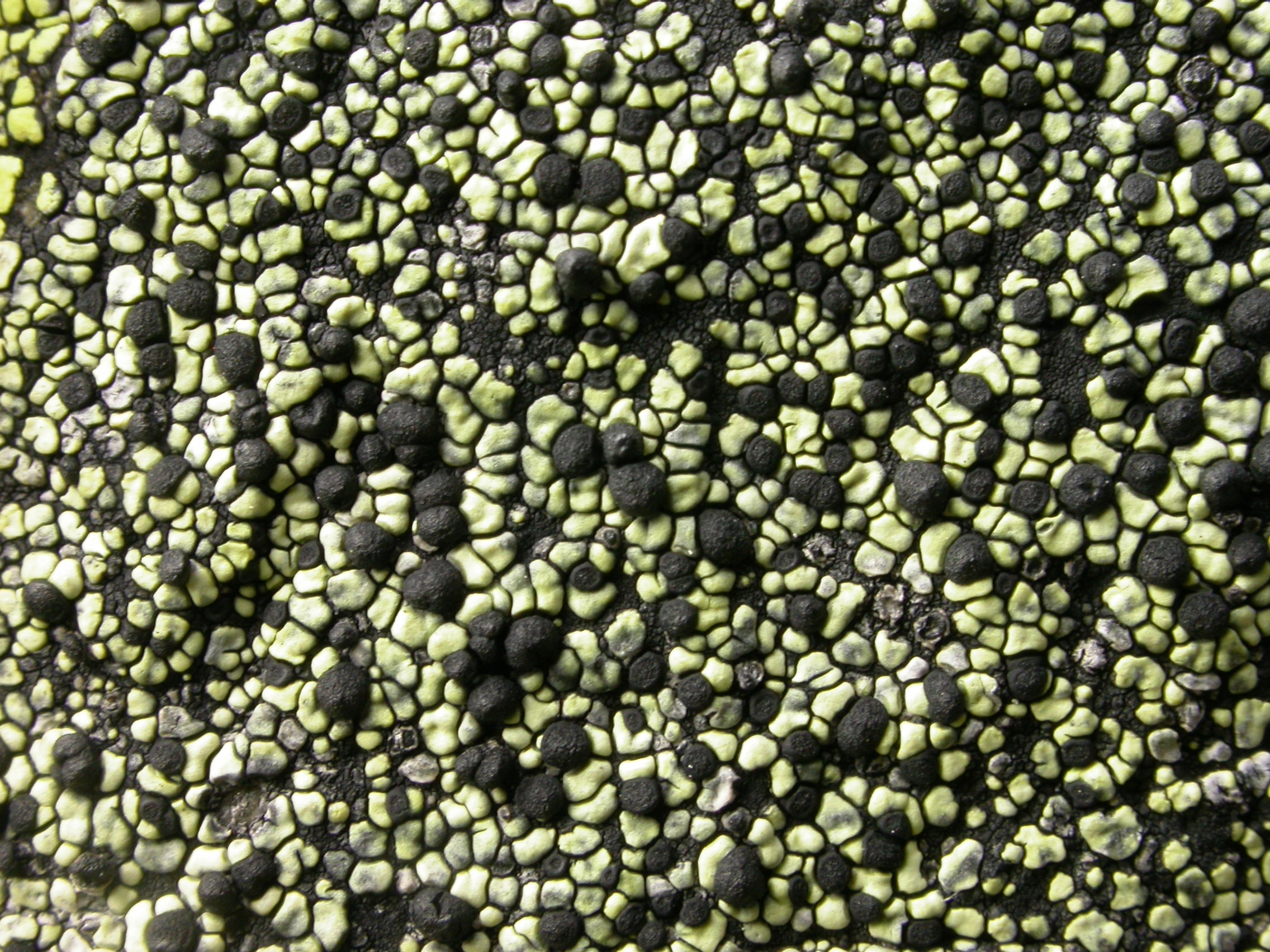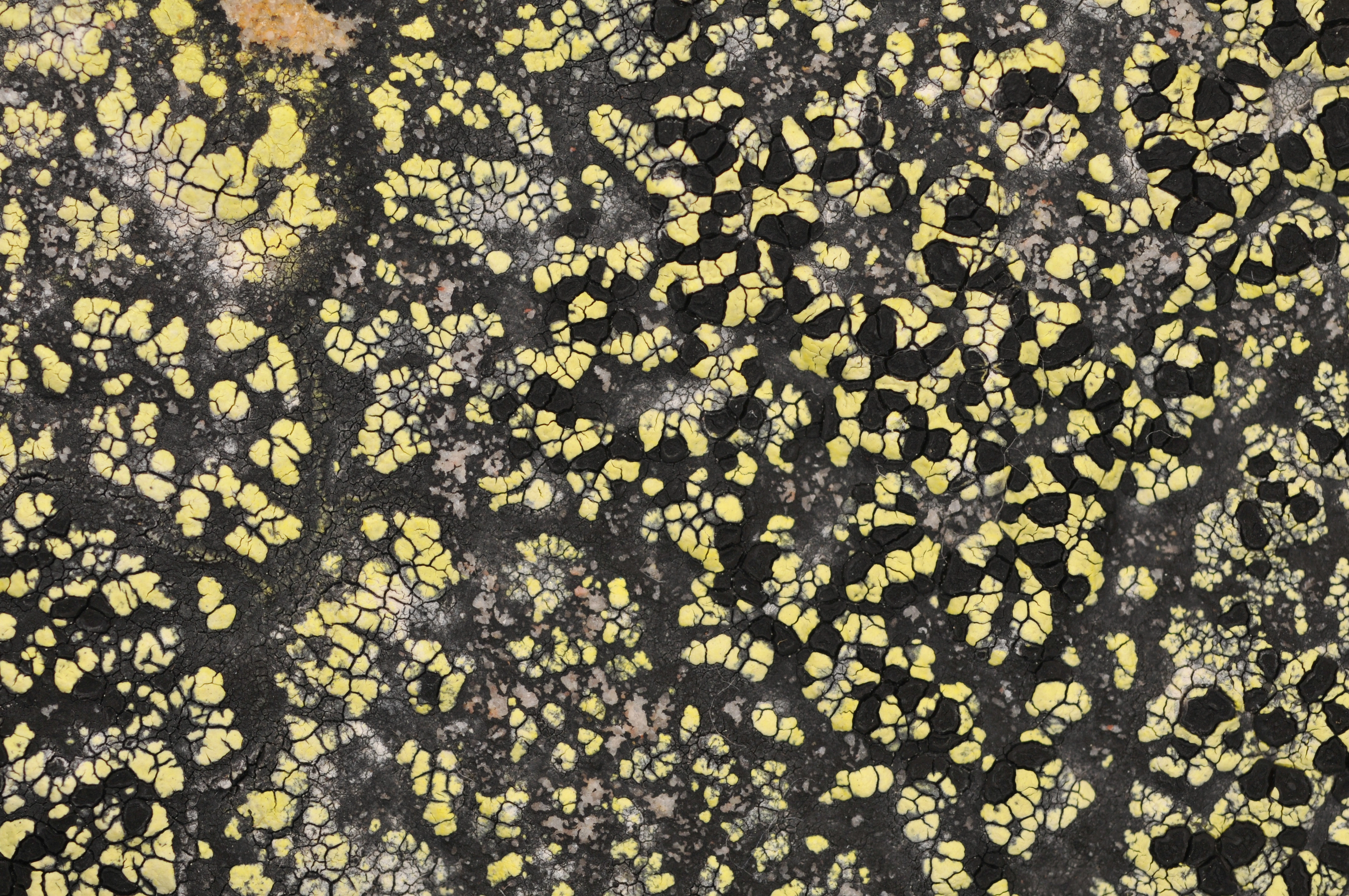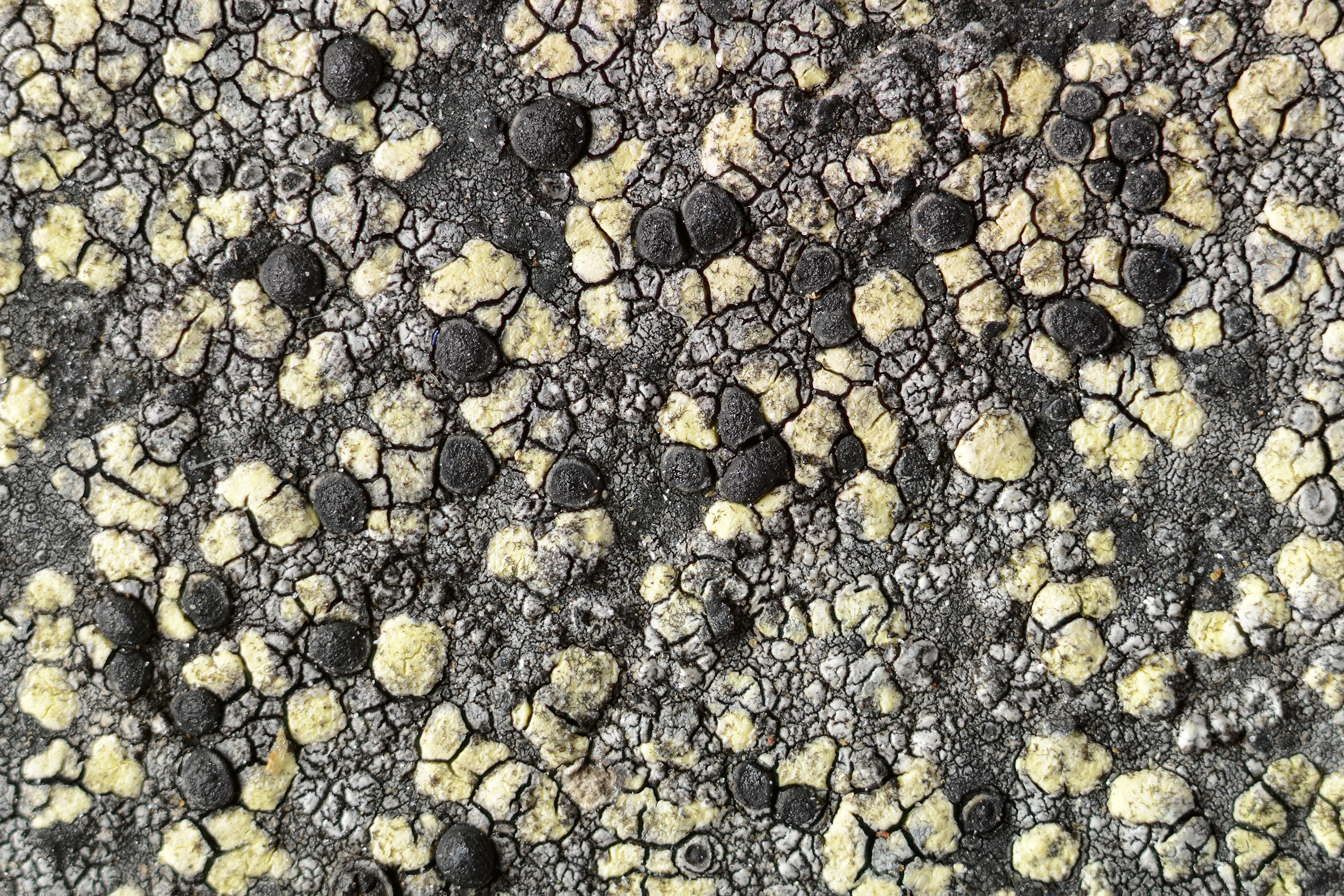Rhizocarpon inarense
- Innhold
- Morphology
- Chemistry
- Habitat
- Comment
- Look-alikes
Morphology
Thallus areolate, up to 15 cm diam.; hypothallus well developed, black; areolae up to 1 mm diam., greyish to greenish yellow, dull or sometimes shiny, more or less contiguous, rather thick, orbicular to angular, usually moderately convex; medulla KI– or KI+ faintly to dark violet. – Apothecia up to 1.2 mm diam., black, epruinose, more or less orbicular, weakly to strongly convex, persistently marginate, often elevated over the areolae; excipulum dark brown in the rim, pale brown to colourless in the inner part, containing crystals, pigment K– (turning more brightly green), crystals K+ red (forming acicular crystals); hypothecium dark brown, K–; hymenium colourless; epihymenium olivaceous green, containing crystals, pigment K– (turning more brightly green), crystals K+ red (forming acicular crystals); ascospores 8 per ascus, 1-septate, dark brown, 21–30 × 10–12 µm. – Conidiomata not seen.
Chemistry
Rhizocarpic and norstictic acid; spot tests: medulla, excipulum, and epihymenium PD+ yellow, K+ red, C–.
Habitat
Common on siliceous or slightly calciferous rock in the mountains, rare in the lowlands.
Comment
The species can usually be recognized morphologically by the greyish to greenish yellow areolae and the convex, orbicular, often elevated apothecia. The other yellow species with large, 1-septate ascospores, Rhizocarpon alpicola, has larger, more brigthly yellow areolae, plane to weakly convex apothecia, a brown epithecium, and contains psoromic acid in the thallus (K–). Specimens with a strong amyloid reaction in the medulla are referred to as R. eupetraeoides.


